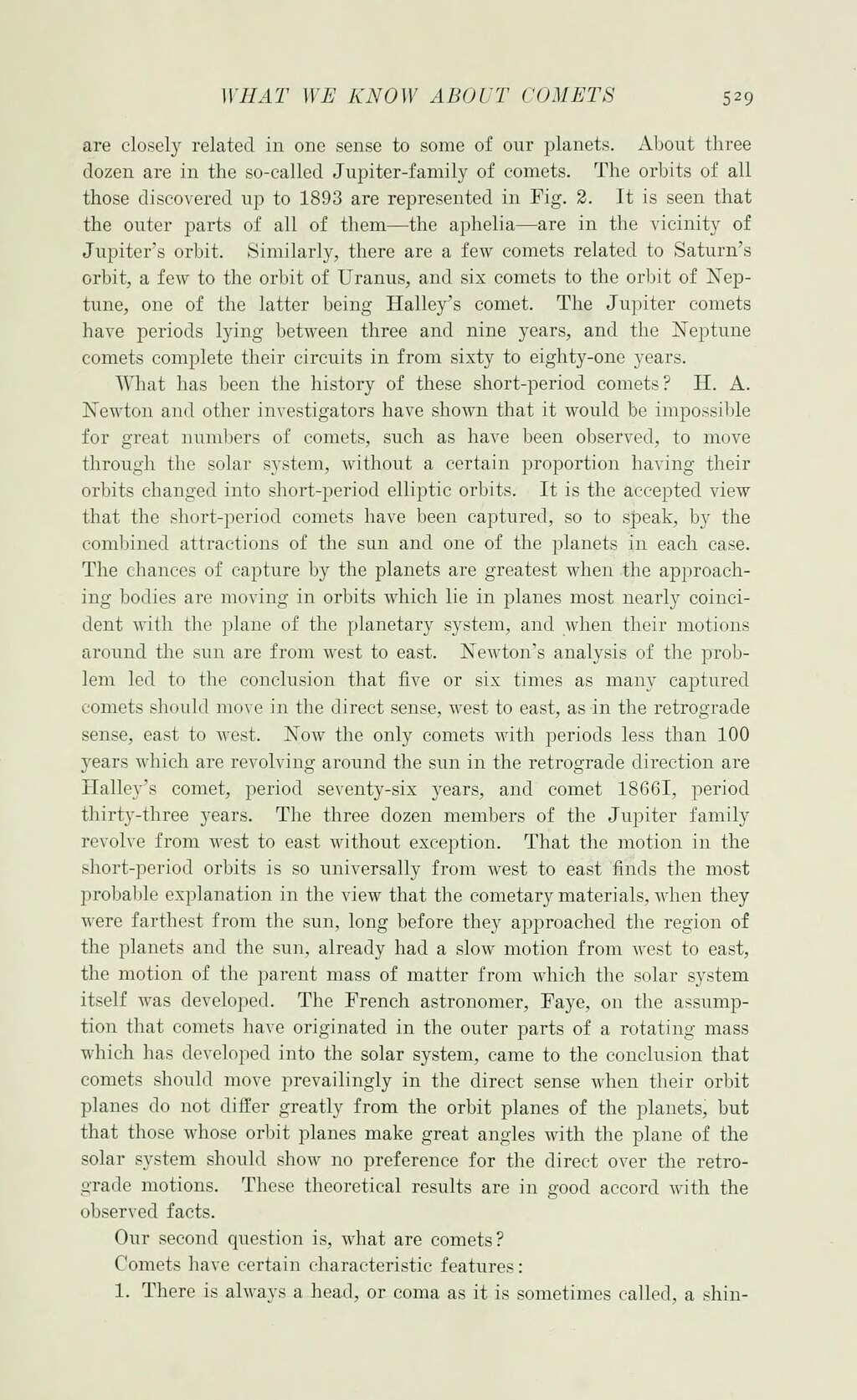WHAT WE KNOW ABOUT COMETS 529
are closely related in one sense to some of our planets. About three dozen are in the so-called Jupiter-family of comets. The orbits of all those discovered up to 1893 are represented in Fig. 2. It is seen that the outer parts of all of them — the aphelia — are in the vicinity of Jupiter's orbit. Similarly, there are a few comets related to Saturn's orbit, a few to the orbit of Uranus, and six comets to the orbit of Nep- tune, one of the latter being Halley's comet. The Jupiter comets have periods lying between three and nine years, and the Neptune comets complete their circuits in from sixty to eighty-one years.
What has been the history of these short-period comets? H. A. Newton and other investigators have shown that it would be impossible for great numbers of comets, such as have been observed, to move through the solar system, without a certain proportion having their orbits changed into short-period elliptic orbits. It is the accepted view that the short-period comets have been captured, so to speak, by the combined attractions of the sun and one of the planets in each case. The chances of capture by the planets are greatest when the approach- ing bodies are moving in orbits which lie in planes most nearly coinci- dent with the plane of the planetary system, and when their motions around the sun are from west to east. Newton's analysis of the prob- lem led to the conclusion that five or six times as many captured comets should move in the direct sense, west to east, as in the retrograde sense, east to west. Now the only comets with periods less than 100 years which are revolving around the sun in the retrograde direction are Halley's comet, period seventy-six years, and comet 18661, period thirty-three years. The three dozen members of the Jupiter family revolve from west to east without exception. That the motion in the short-period orbits is so imiversally from west to east finds the most probable explanation in the view that the cometary materials, when they were farthest from the sun, long before they approached the region of the planets and the sun, already had a slow motion from west to east, the motion of the parent mass of matter from which the solar system itself was developed. The French astronomer, Faye, on the assump- tion that comets have originated in the outer parts of a rotating mass which has developed into the solar system, came to the conclusion that comets should move prevailingly in the direct sense when their orbit planes do not differ greatly from the orbit planes of the planets, but that those whose orbit planes make great angles with the plane of the solar system should show no preference for the direct over the retro- grade motions. These theoretical results are in good accord with the observed facts.
Our second question is, what are comets?
Comets have certain characteristic features :
1. There is always a head, or coma as it is sometimes called, a shin-
�� �
